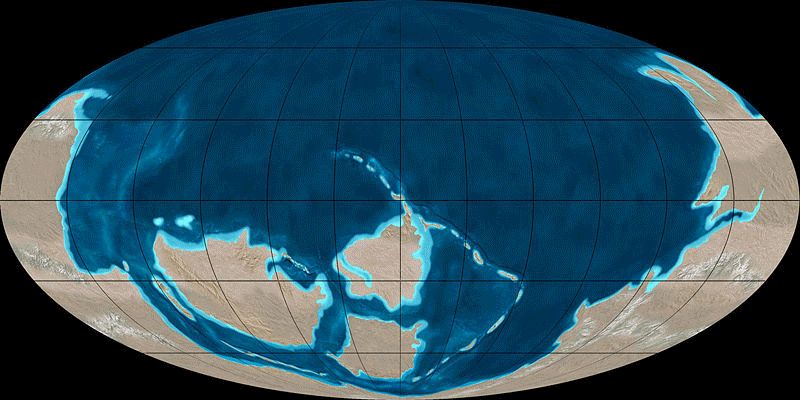Difference between revisions of "Plate Tectonics"
(Created page with 'File:lighterstill.jpg File:TectonicReconstructionGlobal.gif <blockquote>'''Plate tectonics''' (from the Late Latin tectonicus, from the Greek: τεκτονικό...') |
m (Text replacement - "http://" to "https://") |
||
| Line 1: | Line 1: | ||
[[File:lighterstill.jpg]] | [[File:lighterstill.jpg]] | ||
[[File:TectonicReconstructionGlobal.gif]] | [[File:TectonicReconstructionGlobal.gif]] | ||
| − | <blockquote>'''Plate tectonics''' (from the Late [[Latin]] tectonicus, from the [[Greek]]: τεκτονικός "pertaining to building") is a [[scientific]] [[theory]] which describes the large scale [[motions]] of [[Earth]]'s [ | + | <blockquote>'''Plate tectonics''' (from the Late [[Latin]] tectonicus, from the [[Greek]]: τεκτονικός "pertaining to building") is a [[scientific]] [[theory]] which describes the large scale [[motions]] of [[Earth]]'s [https://en.wikipedia.org/wiki/Lithosphere lithosphere]. It is vital for the [[existence]] of life on earth because of the role that it plays in the global [[cycle]] that maintains the [[balance]] of carbon between the [https://en.wikipedia.org/wiki/Biosphere biosphere], [https://en.wikipedia.org/wiki/Pedosphere pedosphere], [https://en.wikipedia.org/wiki/Geosphere geosphere], [https://en.wikipedia.org/wiki/Hydrosphere hydrosphere], and [https://en.wikipedia.org/wiki/Atmosphere atmosphere]. A similar [[process]] likely takes place on other [[celestial]] objects when they are sufficiently similar to Earth. The [[theory]] builds on the older [[concepts]] of [https://en.wikipedia.org/wiki/Continental_drift continental drift], developed during the first decades of the 20th century by [https://en.wikipedia.org/wiki/Alfred_Wegener Alfred Wegener], and seafloor spreading, developed in the [https://www.wikipedia.org/wiki/1960's 1960s].</blockquote> |
| − | <blockquote>The lithosphere is broken up into what are called tectonic plates. In the case of [[Earth]], there are currently seven to eight major (depending on how they are defined) and many minor plates. The lithospheric plates ride on the asthenosphere. These plates move in [[relation]] to one another at one of three types of plate boundaries: [ | + | <blockquote>The lithosphere is broken up into what are called tectonic plates. In the case of [[Earth]], there are currently seven to eight major (depending on how they are defined) and many minor plates. The lithospheric plates ride on the asthenosphere. These plates move in [[relation]] to one another at one of three types of plate boundaries: [https://en.wikipedia.org/wiki/Convergent_boundary convergent], or collisional boundaries; [https://en.wikipedia.org/wiki/Divergent_boundary divergent boundaries], also called spreading centers; and transform boundaries. Earthquakes, volcanic activity, mountain-building, and oceanic trench formation occur along plate boundaries. The lateral movement of the plates is typically 50–100 mm annually.</blockquote> |
| − | <blockquote>Tectonic plates are able to move because the Earth's lithosphere has a higher strength and lower density than the underlying asthenosphere. Their movement is driven by heat dissipation from the [ | + | <blockquote>Tectonic plates are able to move because the Earth's lithosphere has a higher strength and lower density than the underlying asthenosphere. Their movement is driven by heat dissipation from the [https://en.wikipedia.org/wiki/Mantle_(geology) mantle]. Lateral density variations in the mantle result in convection, which is transferred into tectonic plate motion through some combination of drag, downward suction at the [https://en.wikipedia.org/wiki/Subduction subduction zones], and variations in topography and density of the crust that result in [[differences]] in [[gravitational]] [[force]]s. The [[relative]] importance of each of these factors is unclear.[https://en.wikipedia.org/wiki/Plate_tectonics]</blockquote> |
==See Also== | ==See Also== | ||
| − | *[ | + | *[https://books.google.com/books?id=WNplY_v5TP4C&printsec=frontcover&dq=the+garden+of+ediacara&ei=nW9yS9e8Faf6ygTs6eGMBQ&client=firefox-a&cd=1 The Garden of Ediacara] |
[[Category: Earth Science]] | [[Category: Earth Science]] | ||
Latest revision as of 02:32, 13 December 2020
Plate tectonics (from the Late Latin tectonicus, from the Greek: τεκτονικός "pertaining to building") is a scientific theory which describes the large scale motions of Earth's lithosphere. It is vital for the existence of life on earth because of the role that it plays in the global cycle that maintains the balance of carbon between the biosphere, pedosphere, geosphere, hydrosphere, and atmosphere. A similar process likely takes place on other celestial objects when they are sufficiently similar to Earth. The theory builds on the older concepts of continental drift, developed during the first decades of the 20th century by Alfred Wegener, and seafloor spreading, developed in the 1960s.
The lithosphere is broken up into what are called tectonic plates. In the case of Earth, there are currently seven to eight major (depending on how they are defined) and many minor plates. The lithospheric plates ride on the asthenosphere. These plates move in relation to one another at one of three types of plate boundaries: convergent, or collisional boundaries; divergent boundaries, also called spreading centers; and transform boundaries. Earthquakes, volcanic activity, mountain-building, and oceanic trench formation occur along plate boundaries. The lateral movement of the plates is typically 50–100 mm annually.
Tectonic plates are able to move because the Earth's lithosphere has a higher strength and lower density than the underlying asthenosphere. Their movement is driven by heat dissipation from the mantle. Lateral density variations in the mantle result in convection, which is transferred into tectonic plate motion through some combination of drag, downward suction at the subduction zones, and variations in topography and density of the crust that result in differences in gravitational forces. The relative importance of each of these factors is unclear.[1]
